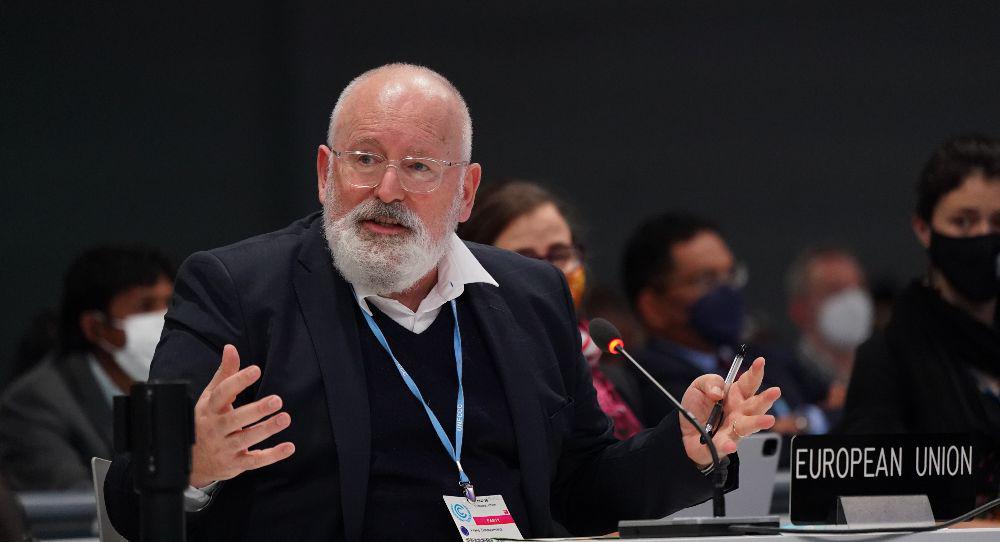Blah blah blah or success?
COP26 should be judged against the implementation pathway it sets us upon. The building blocks for the decade of implementation are weak, which is why the EU has a major role to play in accelerating the pace of action at home, and crucially, abroad.
Climate activists call the climate summit a dismal failure. Diplomats hail it a significant success. So, what was COP26? It is tempting to fall into binary assessments. But COP26 delivered something other than failure or success: it delivered a change of pace and a subtle yet potentially transformative negotiation focus.
Let’s start with where we stand.
Humanity has already contributed to a 1.1°C warming compared to pre-industrial levels. There is a very small carbon budget left if humanity is to stand a chance of keeping global warming thresholds under 1.5°C.
Developing countries that have least contributed to industrial carbon emissions argue that it is only fair that this remaining carbon budget be reserved for their developing trajectories, thereby demanding richer and emission-intensive countries to drastically cut down on fossil consumption, starting now.
Most countries have come up with nationally determined contributions (NDCs) that outline what their transitions should look like. But scientists tell us that we are still on the path of a 2.4°C warming by 2100, even after COP26.
The climate summit did not put us decisively and securely on the path of locking in the 1.5°C outcome. That is, it did not do so yet. It did, however, succeed in doubling down on the pressure levers needed to get us there eventually, in two specific ways.
First, in Glasgow, all countries agreed to come back to the negotiating table as early as next year with updated NDCs, rather than five years down the line as previously agreed. The accelerated timeline is a stinging recognition that transition plans are a galaxy away from what the planet needs in order to keep humanity safe. The focus going forward will be on tangible implementation plans for 2030, which are critical for effective transitions.
Second, negotiations about adaptation finance and means as well as loss and damage took center stage. Developed economies, first and foremost the EU, should finally embrace the change of negotiation angle that it represents.
COPs have historically focused on mitigation and given lip service to adaptation. But COP26 challenged that premise. Thanks to the unflinching negotiation positions of G77 countries, small state islands, and least developed countries and thanks to climate activists, the focus of COP is now turning toward the gaping holes on financeable and actionable climate justice.
By now, it is clear that upgraded NDCs heavily depend on finance negotiations for adaptation and loss and damage. The negotiation strategy at the heart of COP processes must be reworked. The EU should be prepared to embrace this if it is to claim true leadership on climate action.
The EU “only” emits about 7% of global greenhouse gas emissions. But it can only do so because it outsources emissions and environmental destruction to other countries through its supply chains and economic ties.
To be a fully credible power broker in decisive climate action, the EU must therefore continue transitioning at home while actively facilitating transitions across the globe, and particularly in the countries that are both climate vulnerable and critical to European transition plans.
The EU has pledged €100 million ($114 million) out of the $326 million currently pledged in the climate adaptation fund. But this total only amounts to five cents per person in developing countries. The figure pales when one considers that a country like Cameroon already spends 9% of its GDP on climate adaptation.
The EU has a historical responsibility to support adaptation research and finance with larger contributions. It has a geopolitical opportunity to restore the trust needed to advance climate negotiations. Quite simply, it has an interest in doing so. For if climate action fails, the EU will succumb to economic breakdown of supply chains and migratory pressures resulting from climate disruptions. In other words, the EU will break.
Surely, this prospect should provide enough political motivation for member states. Rather than treating climate action as a policy add-on or adjustment variable, the EU should adopt regenerative ecological diplomacy at the heart of its geo-economic, foreign, and security policy so as to support mitigation and adaptation in an integrated way.
If COP27 is to reach yet another level of climate action, trust between developed and developing economies is what will make it happen. The possibilities for effective, constructive, and trust-restorative diplomacy are endless.
The EU has twelve months to engage at multilateral and bilateral levels to support the reframing of COP negotiations in favor of integrated mitigation and adaptation targets as well as loss and damage.
In this coming year, the European Commission and the European External Action Service (EEAS) need to embark on a collective journey to turn climate diplomacy into multidimensional implementation diplomacy. That means transforming aid into adaptation investments. It means supporting reforms of financial and international institutions to strengthen climate resilience. And it means formalizing dialogue on adaptation and on loss and damage that reach binding commitments.
With its new Bauhaus, the EU has an opportunity to strike research partnerships across the world focusing on what nature-based adaptation processes can look like—an area of integrated action for mitigation and adaptation that is currently under-researched and underfunded. The union also has the chance to support lesson-sharing among groups of countries that face similar climate disruptions. And these are just a couple examples from a long list of opportunities waiting to be explored.
Supporting climate justice makes good geopolitical sense for the EU. Restoring trust with climate vulnerable countries is the only way to maintain effective multilateralism, ensure resilience against destructive competition for resources, and address partnerships on a new footing. In other words, a climate-safe future hinges on solidarity.






.jpg)